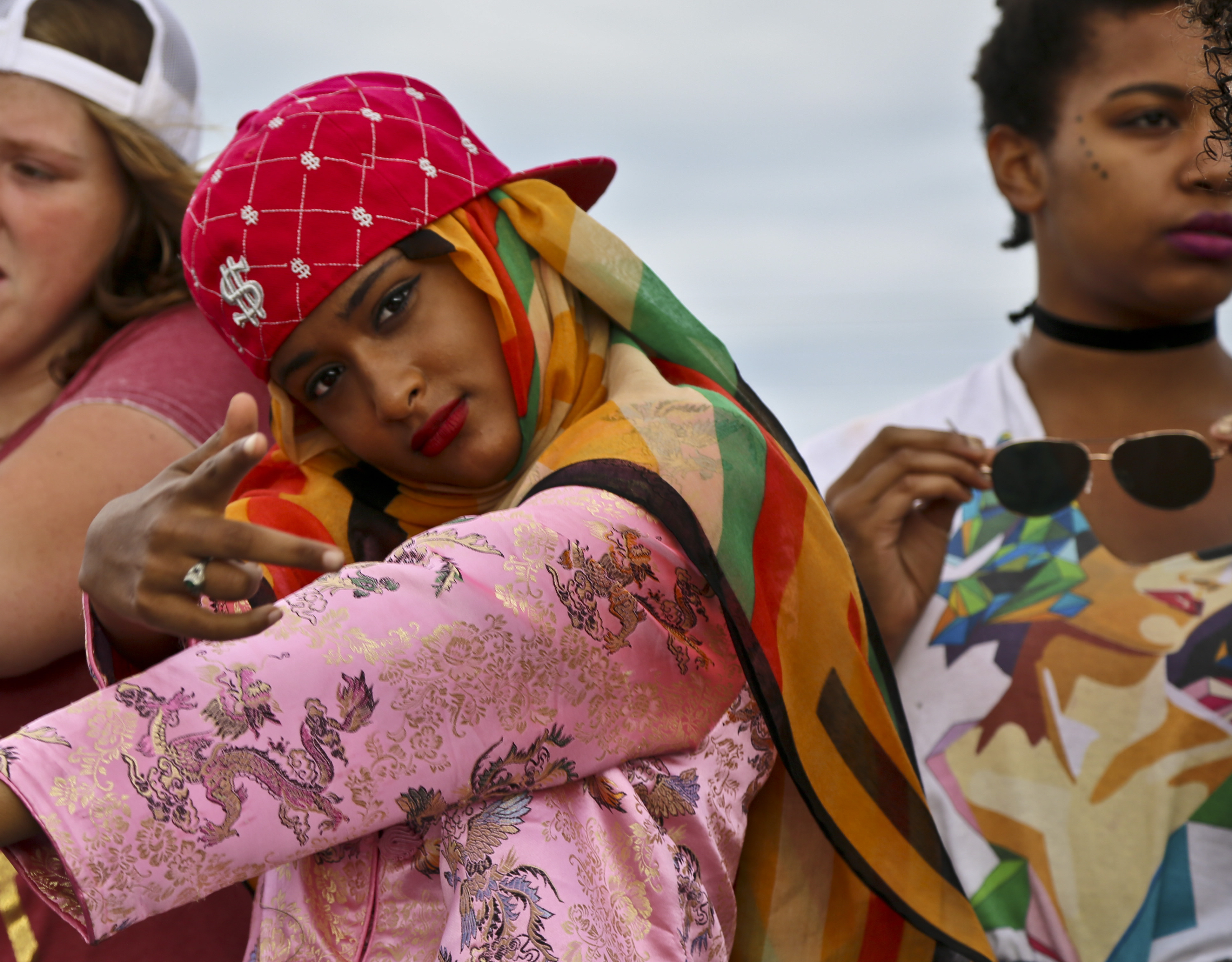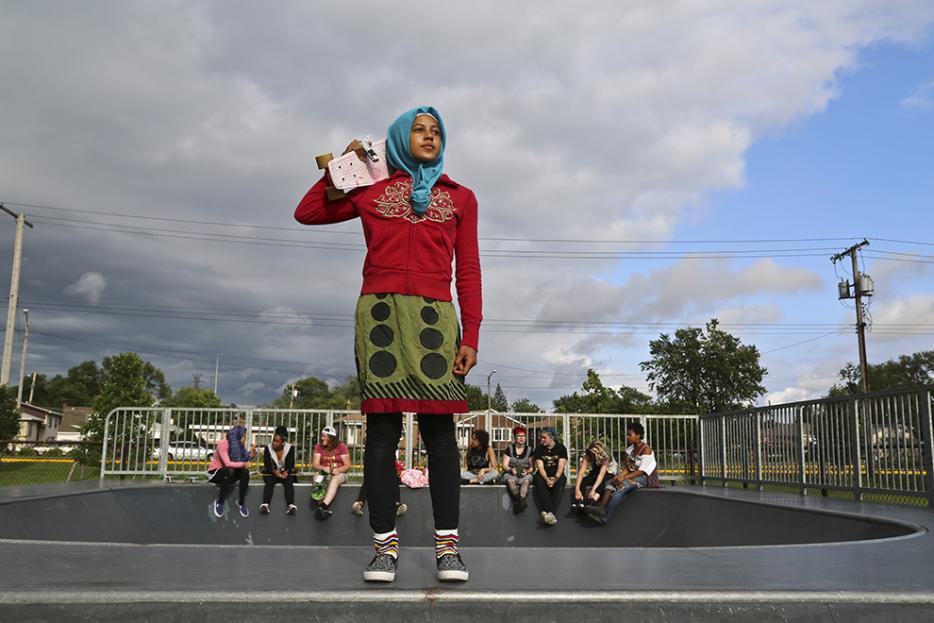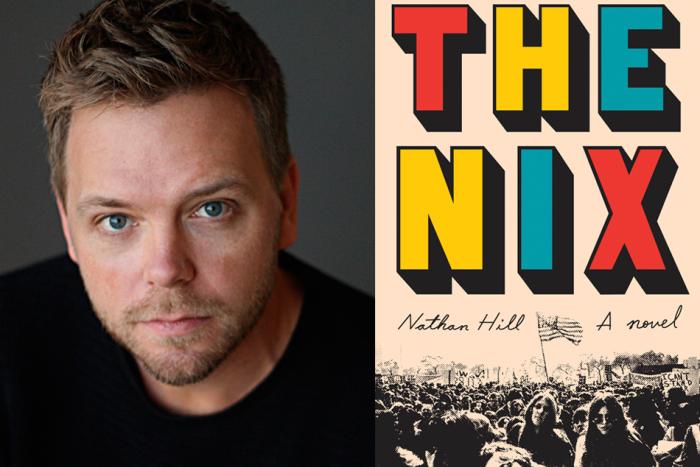An artist bio nestled a few pages into a media kit for one of Jennifer Reeder’s upcoming films, All Small Bodies, reads: “I am influenced by Ohio, where I grew up—all that sky and flatness. And even more so by the Midwestern people and their kind of everyday destructiveness and determination to cope.” It’s this fragile equation of cynicism and hope that distinguishes Reeder’s short films. Reeder has eleven directing credits to her name, the most recent and acclaimed of which are for A Million Miles Away (2014), Blood Below the Skin (2015), and Crystal Lake (2016). The majority of these are a working through of the thematic algebra of teenage ennui and feminist chutzpah. In all of these works, she casts non-professional teenage girls as the leads and pays subtle homage to a host of feminist filmmakers that have come before, from Chantal Akerman to Agnès Varda.
An Associate Professor in Moving Image and the Head of the Art Department in the School of Art and Art History at the University of Illinois at Chicago, Reeder’s films have screened at Sundance, Berlinale, Rotterdam, and at Montreal’s Festival Regard. Reeder and I spoke about what compelled her to make Crystal Lake, a short film about a young grieving Muslim girl and a band of skateboarding feminists, her Hansel and Gretel redux, what drives her textured and intertextual moving images, and what it’s like to snoop around people’s apartments in the name of character study.
Julia Cooper: The poet Eileen Myles loves your Instagram account, and said so in a recent New York Times profile. How did that happen?
Jennifer Reeder: I met Eileen a couple of years ago. She came to do a reading at the school where I teach, and the person who coordinated that visit asked me if I wanted to go out to dinner with her. I had never met her. We had some mutual friends. I said of course, and we had a very lovely dinner—she’s just a remarkable human. Fast forward to whenever that Times article came out: a friend of mine forwarded it to me and said, Well look at you! I had instantly doubled the amount of followers, mostly poets.
I want to talk about Crystal Lake, your latest short film about skater girls in Chicago and a young Muslim girl grieving her mother. How did this project come to life?
Teen girls and female youth empowerment, female friendship as survival strategy: these have been the subject of so many of my recent shorts. I’d been following these beautiful images and stories that were coming out of Afghanistan and Saudi Arabia about an organization called Skateistan. I loved that these girls could be active members of their religion and culture, but still express themselves as young girls and do something that is empowering. These are images of women embracing tradition, and also breaking out of tradition, and neither one is mutually exclusive.
With Crystal Lake, I wanted to make a film that presented feminist Muslim as a very real contemporary image, and again, not as an idiom that was paradoxical or imaginary. It came out of my own interest in who I wanted to put in front of the camera. But it was also being influenced by these Skateistan images of young skater girls. I then transported that to Chicago and built a story around thinking about young American Muslim girls. I wanted to make a film about another kind of average American girl who just happens to be Muslim.

Right, and who just happens to not have a lot of movies made about her yet.
I loved Girlhood, A Girl Walks Home Alone At Night, and Pariah, but those films are about a certain kind of experience for young women of color that also has to do with growing up in urban environments. There’s plenty of young women of color for whom that is not their experience. They’re living outside of cities, they’re living in rural areas, or they’re living in suburban areas. So, wanting to make a film that really represented where young women of color could say, Oh, there I am.
One of the tricky things about making short films is that not a lot of cinema houses screen them. I wanted to hear you talk about whether or not there’s a market for short films outside of the festival circuit.
Not really. And that’s the hard part of making short films. I love making short films; they’re so much cheaper to make, they’re faster to make; and there are ideas that should only be short films. Unlike the novella, or the short story, or even the poem, short films just don’t get the same kind of recognition. Let alone the distribution of a feature film. Even a horrible feature film. It’s one of the reasons why I’m developing a feature that has so many of the same themes that come out in A Million Miles Away and Blood Below The Skin, as well as Crystal Lake.
And when you’re talking about your feature, is this As With Knives and Skin?
Exactly. I’m actually making revisions to the script right now, and we’re going to shoot this fall or next summer depending on financing and casting. Even though I’m a champion of the short film they just don’t get widely screened. I think the short films I’ve made have done just as well as any short film can do: they’ve screened at Berlin, Sundance, BAM, they’ve been broadcast. They have done all the things you would want a short film to do, and yet the audience is still really tiny.
I would eventually like to make my upcoming project All Small Bodies into a feature, but right now it’s a short that I’m shooting in Germany this summer. It’s a sci-fi take on Hansel and Gretel. Two girls lost in the woods take over and find a male witch.
You’re the queen of intertextuality. Why do you plant the works of Octavia Butler and Joan Didion within your images—why is it important to you?
I think partially it comes from having a background in visual art. I didn’t go to film school, I went to art school. I was a filmmaker but within an art school context, so I was surrounded by people who were interested in what information came from pure visual elements. I learned how much props can carry narrative content and how they can fill the gaps in terms of character development. It’s something I pay attention to in my daily life. I’m totally the kind of person who, if you invite me over to your house for the first time, I try to be stealth about it but I’m totally looking at books, looking at records, and looking at what’s in the refrigerator. Speaking of books, John Waters has this great quote where he’s like, “you should never have sex with someone who doesn’t have books.” The first thing you should do if you go home with a one-night stand is to make sure that they have books.
My boyfriend went through my fridge (while I was in the shower) the morning after we went home together for the first time to see if I was a sociopath or not.
There’s no severed heads in here.
Nope. Just some expired almond milk. I love this idea of you taking notes at a dinner party while everyone else is talking—just you sleuthing around.
I’m one hundred percent that person! What is being expressed in their environment that I can translate to a film set and make a part of the character I’m writing? It’s also a way for me to inject autobiography. Bringing some of that stuff in (like old VHS tapes) helps me inject some of my own autobiography without being overly sentimental, indulgent, or self-centered. It’s also a way to have a teaching moment. If a character’s reading a book, the book should matter; what books matter? Oh, Octavia Butler.
I’ll never miss an opportunity to jam up a set with important art direction. Art direction matters. I’ve see so many films where it doesn’t. That’s why I’m such a fan of Hitchcock. The colors that those characters are in. Their hair color, their lips. It’s not that Hitchcock was filling the frame with the same kind of art direction that I do, but the color palette mattered, and the psychology of the color palette mattered. The same goes for David Lynch and other contemporary filmmakers—I think Kelly Reichardt does a great job in her film Meek’s Cutoff where the art direction is just overwhelming.
Your films cast nonprofessional teenage actors, some of whom you’ve worked with more than once now. What is it about teens that draws you back to work with them time and again?
Autobiographically, my teenage years are still sort of a mystery to me. Even as an adult female, I’m like, what happened? I feel like I’m still approaching 17, but now I have a car, and children, and a mortgage payment. I think that coming of age is a lifelong process. We’re constantly evolving and rediscovering who we are. I’m specifically interested in the representation of young girls because they get short-changed time and again, and adolescence is all about transition. So the teenage girl is the perfect kind of person to write a film about: there’s lots of drama. There’s lots of twist and turns and climaxes and payoffs.
Everything’s so amplified.
Totally, everything’s amplified, everything turns on a dime, even in the most banal setting. What I’ve usually done is to pair a transitioning adolescent with a transitioning parent, to see what happens and who comes up to the surface first.
It’s usually the teen, isn’t it?
Yeah, that’s what usually happens. I do think that as we get older our coping techniques get weirder. I love trying to make up for the gap of authentic representations of women. Until I’m not obsessed with that, I will keep making films about the female experience both with young women and adult women. It’s just sort of a beautiful, awkward, poetic time of physical, emotional, and psychological transformation.






